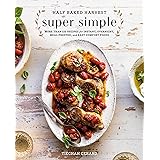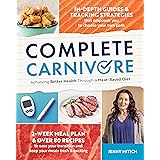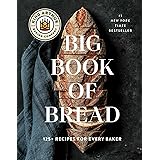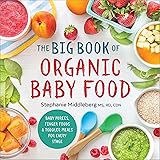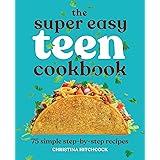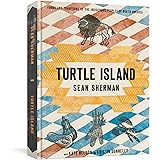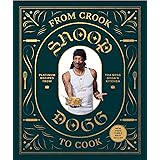I remember once, my nephew looked at his plate with confusion. He saw his aunt eating a plate of pasta and vegetables. Then, he looked at his dad’s plate, piled high with chicken and rice. He asked, “Why are their meals so different?” This common question often sparks conversations about what we eat. Understanding these choices starts with simple definitions. The video above offers a great basic introduction to two main categories of eating habits. It explains the core difference between someone who is vegetarian and non-vegetarian.
Sometimes, these simple terms can feel a bit confusing. Knowing the basics helps us understand our food better. It also helps us understand other people’s choices. Let’s dive deeper into what these terms mean. We will explore why people choose these paths. This helps everyone make informed decisions.
Understanding Vegetarian and Non-Vegetarian Diets
The video clearly defines two main food categories. These are non-vegetarian and vegetarian. It explains what each group typically eats. This foundational knowledge is key. It helps us navigate different food choices.
What is a Non-Vegetarian Diet?
A non-vegetarian diet includes animal products. People on this diet eat various meats. They consume eggs, meat, and fish. This provides many nutrients.
Imagine a delicious family dinner. It might feature a roasted chicken. Or perhaps a plate of savory lamb chops. These are typical non-vegetarian foods. Beef, pork, and other types of poultry also fit here. Seafood, like shrimp or salmon, is also part of this diet. These foods are often rich in protein and iron. They provide essential vitamins too.
What is a Vegetarian Diet?
A vegetarian diet focuses on plant-based foods. People following this diet avoid all meat. They do not eat fish or poultry either. Their meals come from the earth.
Imagine a vibrant garden plate. It would be full of fresh fruits and colorful vegetables. This is the heart of a vegetarian diet. Grains like rice, pasta, and bread are staple foods. Legumes, such as beans and lentils, add protein. Nuts and seeds also provide important nutrients. Many vegetarians also consume dairy products. These include milk, cheese, and yogurt. Eggs might also be part of their diet. This diet can be very diverse. It offers many delicious options.
Why People Choose Their Plates: Exploring Dietary Choices
People choose their diets for many reasons. It is not just about taste. Several factors influence these decisions. Understanding these reasons promotes respect. It helps us appreciate different viewpoints.
1. Health Reasons
Health is a big factor for many. Some people choose a non-vegetarian diet. They believe it offers complete proteins. It ensures they get enough iron and Vitamin B12. These nutrients are vital for energy.
Conversely, many opt for a vegetarian diet for health. This diet is often lower in saturated fats. It can be higher in dietary fiber. Such eating patterns may reduce risks. They might lower the chance of heart disease. Imagine feeling light and energetic. Many believe a plant-based diet helps achieve this. Both diets, if well-planned, can be very healthy.
2. Ethical Considerations
Caring for animals is a strong motivator. Many people feel compassion towards animals. They do not wish to cause them harm. This leads them to avoid meat products.
Imagine loving all creatures great and small. You might then choose not to eat them. This ethical stance is powerful. It guides many vegetarian and vegan choices. It reflects a deep personal belief. People want to live kindly.
3. Environmental Impact
Our planet’s health is another concern. Meat production uses many resources. It requires more land and water. It can also produce more greenhouse gases.
Imagine a smaller carbon footprint. Choosing a plant-based diet helps the environment. Growing vegetables uses fewer resources. This reduces the strain on our planet. Many people choose vegetarian for this reason. They want to protect Earth’s future. It is a way to live more sustainably.
4. Religious or Cultural Beliefs
Religion and culture often shape diets. Certain faiths promote specific eating habits. They guide what followers consume. These traditions are deeply ingrained.
Imagine ancient customs guiding your plate. Hinduism and Jainism often encourage vegetarianism. Some cultures avoid pork or beef. These rules are part of their identity. They connect people to their heritage. Food becomes a sacred practice.
5. Personal Preference and Taste
Sometimes, it is simply about what you like. People have unique taste buds. They prefer certain flavors and textures. This is a very common reason.
Imagine craving a juicy steak. Or perhaps a crisp, fresh salad. Your personal preference guides your choice. Some people just love vegetables. Others cannot imagine life without meat. It is about what brings joy to your palate. This makes food a personal adventure.
Beyond the Basics: Different Types of Vegetarian Diets
The term “vegetarian” itself is a broad one. It has several sub-categories. Each type has slightly different rules. Understanding these variations is helpful. It shows the diversity within plant-based eating.
Lacto-Ovo Vegetarian
This is a very common type of vegetarian diet. People eat dairy products. They also consume eggs. However, they avoid meat, fish, and poultry. It allows for more food choices.
Imagine enjoying a cheese omelet for breakfast. Or having a glass of milk with dinner. These foods are perfectly fine for lacto-ovo vegetarians. This diet provides various protein sources. It offers flexibility in meal planning.
Lacto-Vegetarian
Lacto-vegetarians include dairy in their diet. They eat milk, cheese, and yogurt. But they do not eat eggs. They also avoid all types of meat and fish. This diet is popular in some cultures.
Imagine a creamy yogurt parfait for breakfast. Or a pizza loaded with extra cheese. These foods fit a lacto-vegetarian lifestyle. This choice often aligns with specific religious practices. It is a very defined eating pattern.
Ovo-Vegetarian
Ovo-vegetarians eat eggs. They do not consume dairy products. They also avoid all meat, fish, and poultry. This option is less common than lacto-ovo.
Imagine a fluffy scrambled egg dish. Eggs provide a great source of protein. This diet works for those sensitive to dairy. Or for those who simply prefer to avoid it. It is another distinct vegetarian path.
Vegan
Veganism is the strictest plant-based diet. Vegans avoid all animal products. This includes meat, fish, poultry, eggs, and dairy. They also avoid honey and gelatin.
Imagine a diet sourced purely from plants. No animal ingredients are used. This choice extends beyond food too. Vegans often avoid leather or wool. It is a lifestyle deeply committed to animal welfare. It focuses on ethical living. Many find it very rewarding.
Pescatarian
Pescatarians include fish and seafood in their diet. They avoid other animal meats. This means no chicken, beef, or pork. They still get protein from the ocean.
Imagine a plate of grilled salmon. Or a tasty shrimp stir-fry. These are typical pescatarian meals. This diet offers many omega-3 fatty acids. It is often seen as a healthy choice. Some people view it as a step towards vegetarianism.
Flexitarian (Semi-Vegetarian)
Flexitarian means “flexible vegetarian.” People primarily eat plant-based meals. But they occasionally include meat or fish. This diet offers much freedom.
Imagine eating mostly vegetarian during the week. Then, enjoying a piece of chicken on the weekend. This approach is very adaptable. It allows for social flexibility. It helps people transition to more plant-based eating. It focuses on reducing meat intake.
Making Informed Food Choices for You
Deciding what to eat is a personal journey. Whether you lean vegetarian or non-vegetarian, knowledge empowers you. It helps you make choices that fit your lifestyle. It is about well-being and understanding.
1. Learn About Nutrition
Good nutrition is essential. No matter your diet, balance is key. Ensure you get enough protein. Seek out all necessary vitamins and minerals. Both vegetarian and non-vegetarian diets can be healthy. They just require thoughtful planning. Imagine fueling your body perfectly. Research helps you achieve this.
2. Talk to an Expert
Sometimes, professional advice is best. A doctor or nutritionist can help you. They offer personalized guidance. They ensure your diet meets your needs. This is especially important for children. Or for those with health conditions. Imagine having a roadmap to health. Experts can provide that.
3. Respect Other Choices
Everyone’s dietary path is unique. What works for one person may not for another. Be open-minded and kind. Respect others’ decisions about food. This creates a positive environment. Imagine understanding without judgment. Food brings us together, not apart.
4. Try New Foods
Explore the culinary world! Discover new flavors and textures. Try a new vegetarian dish. Or taste an exotic non-vegetarian option. Expanding your palate is fun. It introduces you to diverse cultures. Imagine a world of delicious possibilities. Food adventure awaits you. This understanding makes you a more knowledgeable eater, whether you choose a vegetarian or non-vegetarian plate.


